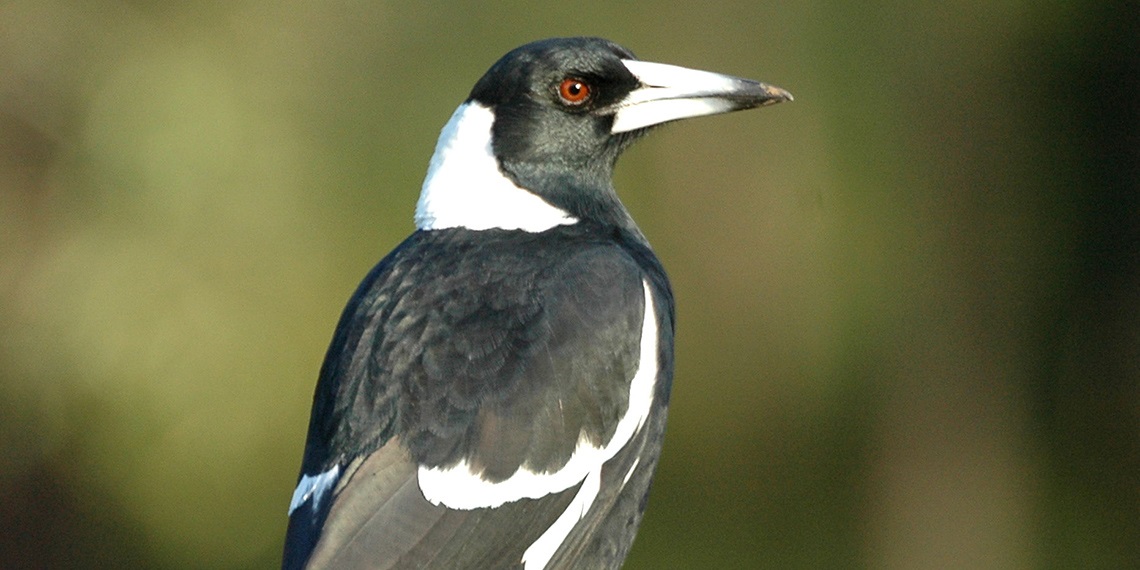Australian magpie

The Australian Magpie is a native bird well known across the Australian landscape for its beautiful caroling song and distinctive black and white feathers. The plumage pattern varies across its range. Its nape, upper tail and shoulder are white in males, grey in females. Their life expectancy is typically up to 25 years. It has adapted well to human habitation and their appetite for insect pests makes them popular with gardeners and suburban farmers.
Read more at Birds in your Backyard.
Have you ever been swooped by a magpie in spring?
A number of Australian native bird species are territorial. Some species, such as magpies and butcherbirds establish and protect their territory during breeding season (late August to early October). They may act aggressively to deter other birds or animals, domestic pets and people, whom they perceive as threats to their nests and chicks. This usually only lasts for 4 to 6 weeks until the chicks fledge (leave the nest). While most birds only swoop or call loudly, occasionally they may actually come into contact with people in an attempt to deter the perceived threat.
Living with magpies
Steps you can take if you have experienced a swooping magpie
- Check the website Magpie alert. It may have other reports of the magpie that has caused concern in your area.
- Provide the following information:
- Watch the magpies in your local area and get to know what trees they prefer.
- Erect a sign near accesses to the nesting tree to let others know, so they can choose to safely go around it or avoid the area altogether by taking an alternate route. Contact local carers who may be willing to help with signs.
- Wear a hat and sunglasses for eye protection or carry an umbrella as you walk at a steady pace through the nesting area. Do not stop and do not run. If you can, move through the area in a group.
- Dismount and walk past the tree, or avoid the area, if you are on a bicycle or skateboard. Never speed past. Try attaching cable ties on your bike helmet so they spike outwards like an echidna, to keep a swooping magpie at a safe distance.
- Choose to walk an alternate route if you have a dog with you. Some magpies will swoop at a dog regardless of how well behaved it is.
A bird is determined a risk to public safety when it is observed or reported doing any of the following
- Caused actual personal injury or damage.
- Attacks the head, striking from the ground upwards and from the front of the person.
- Hovers above the head for a prolonged period, attacking the head and face.
- Constantly swoops, or attacks in an area frequented by elderly and/or disabled persons and/or young children.
- Constantly swoops, or attacks the head or face in a front or backyard, not allowing residents to safely leave or enter the premises.
- Swoops, or attacks in a location that might endanger the victim through their response (eg. along a busy road).
Magpies, like all native species, are protected throughout NSW under the Biodiversity Conservation Act 2016, and it is against the law to kill the birds, collect their eggs, or harm their young.
If you need support or advice relating to the control of protected native animals, please email Licence.HarmFauna@environment.nsw.gov.au
If you would prefer to speak to a Council Officer please email sustainability@kmc.nsw.gov.au or phone 9424 0000.